Power Points:
- Nearly all (97%) of consumers consider review recency to be at least somewhat important when weighing a purchase decision.
- 64% of consumers said they would be more likely to buy a product with fewer, more recent reviews than one with a large volume of reviews older than 3 months.
- Ideally, nearly half (44%) of consumers prefer to find reviews written within the last month.
- 62% of consumers will not purchase a product if the only reviews available were published a year or more ago.
- 64% of consumers indicate they’re more likely to buy a product with fewer, more recent reviews than one with a large volume of reviews older than three months.
- 86% of shoppers feel that review recency is even more important when considering a product or brand they haven’t purchased before.
By now, we’re all in agreement that reviews matter. They’re the single most important factor that impacts purchasing decisions, according to consumers — even above price and recommendations from family and friends.
But, are all reviews created equal? Do recent reviews carry more weight than older reviews? How important is review volume? Is it better to have fewer, more recent reviews or more, older reviews?
To find out the answers to these questions and more, we surveyed 9,012 consumers across the United States. We also analyzed consumer activity across more than 1.5MM online product pages from more than 1,200 retail and brand sites over a six month period, from May 1st, 2021 to November 4th, 2021.
Our research revealed that both of these elements are extremely important to consumers. Today, we’re focusing on review recency. To learn more about the importance of review volume (and get tips for increasing yours), read our full report on The Power of Review Volume & Recency.
Review Recency Matters to Consumers — A Lot
Review recency, or how long ago reviews were published for a given product, is a major consideration for consumers. Nearly all (97%) of consumers consider review recency to be at least somewhat important when weighing a purchase decision:
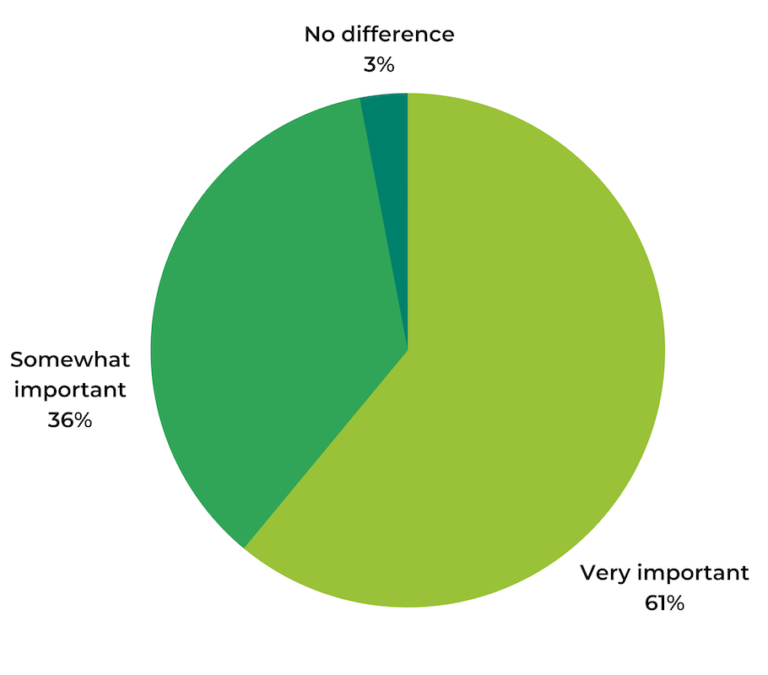
When we asked customers how much they considered the recency of reviews when buying a product, 97% said it was at least somewhat important, with six in ten saying it was very important.
When it comes to recency vs. volume, the majority of consumers said they were willing to trade a large volume of reviews for content that is more current. 64% of consumers said they would be more likely to buy a product with fewer, more recent reviews than one with a large volume of reviews older than three months.
This becomes evident when we break it down by product category. Across the board, we see that consumers tend to rate review recency as more important than review volume.
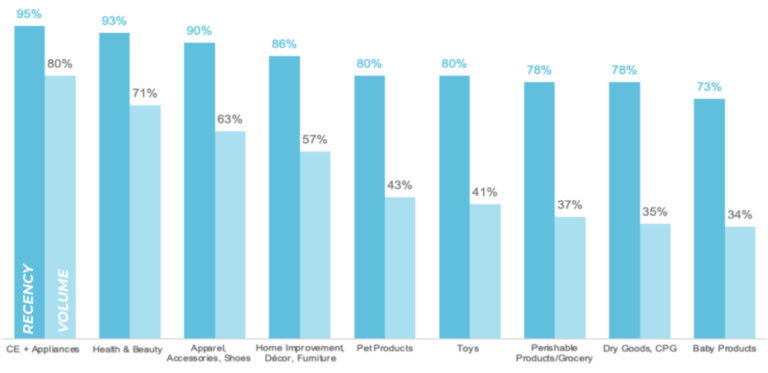
In some categories, such as Consumer Electronics and Appliances, both recency and volume are valued highly by consumers — 95% of consumers say recency is important, while 80% say volume is important. However, in several categories, the discrepancy between these two becomes more pronounced. For example, twice as many consumers say that recency is important when considering products in Toys and Grocery. For categories like Dry Goods/CPG and Baby Products, they’re more than twice as likely.
That’s not to say that review volume isn’t important. It is. There is a direct, positive correlation between the number of reviews a product has and its conversion rate. When a page goes from 0 to 1 reviews, its conversion rate lifts by over 50%. Add more than ten reviews, and the conversion lift increases by 255%.
So, what’s a retailer to do? Is it better to focus on driving recency or volume?
The good news: Brands and retailers don’t have to sacrifice volume for recency, or vice versa. By their nature, the two are interlinked. Focus on improving one, and you’ll improve the other as well. For example, if you consistently drive new reviews, you’ll naturally boost your review volume at the same time.
Impact on Review Recency on Purchasing Decisions
In the eyes of consumers, more recent reviews are always better. But, how recent is recent enough? And perhaps more importantly, can having too few recent reviews actually dissuade customers from making a purchase?
Our research says yes.
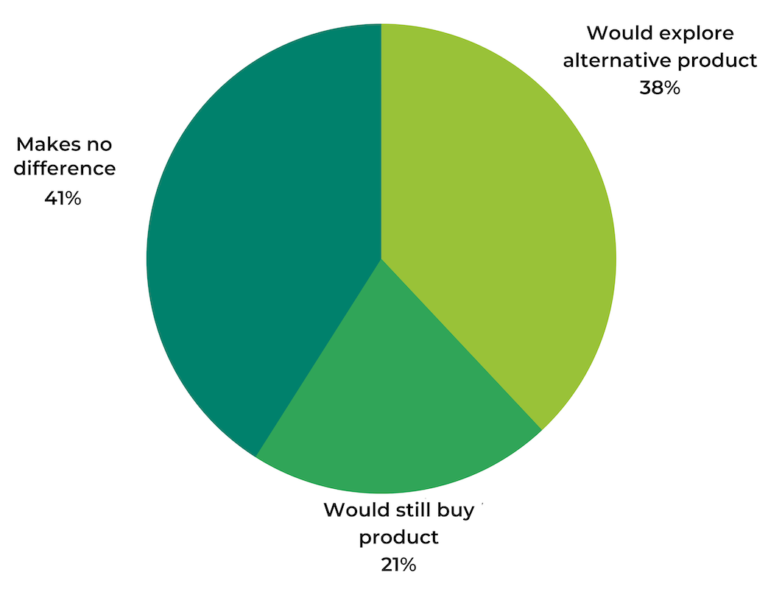
We posed a hypothetical scenario to our survey respondents: If all the reviews for a product you are considering were published three months ago or more, would that make you more likely to consider purchasing an alternative product from a competitor that has more recent reviews (assuming both products have the same average star rating and total number of reviews)?
Over a third of those we surveyed (38%) indicated that if all reviews for a product were published three months ago or more, they’d be more likely to purchase a different product from a competitor with more recent reviews. If all the reviews were even older (published 1 year ago or more), the percentage of consumers who would consider an alternative product jumps to 62%.
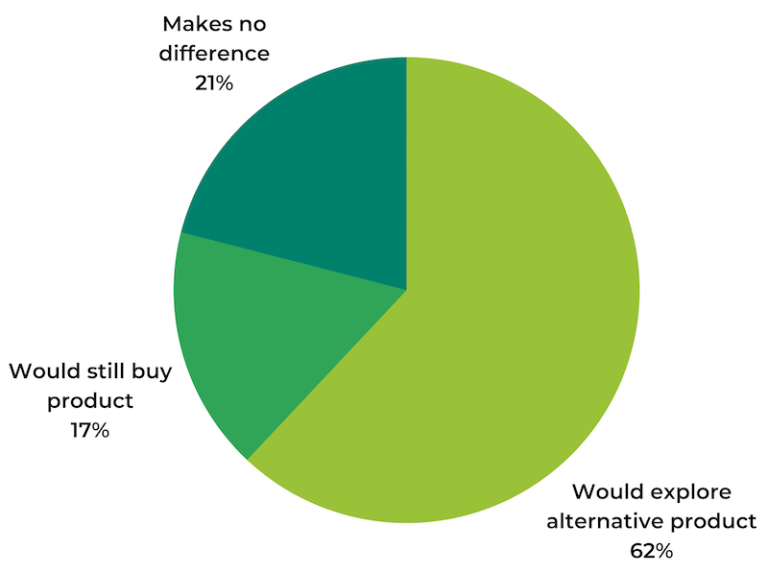
The bottom line: If your product has no recent reviews for a consumer to consider, you may lose them to a competitor. The older the available reviews are for a product, the more likely a consumer is to purchase an alternative product.
Overwhelmingly, Consumers Prefer More Recent Reviews
Clearly, having an absence of recent reviews can dissuade customers from purchasing — particularly if there’s a competing product with more recent reviews. So, how can brands and retailers ensure they meet consumer expectations for review recency?
In an ideal world, the vast majority (97%) of consumers said that they would like to see reviews that are no more than one year old.
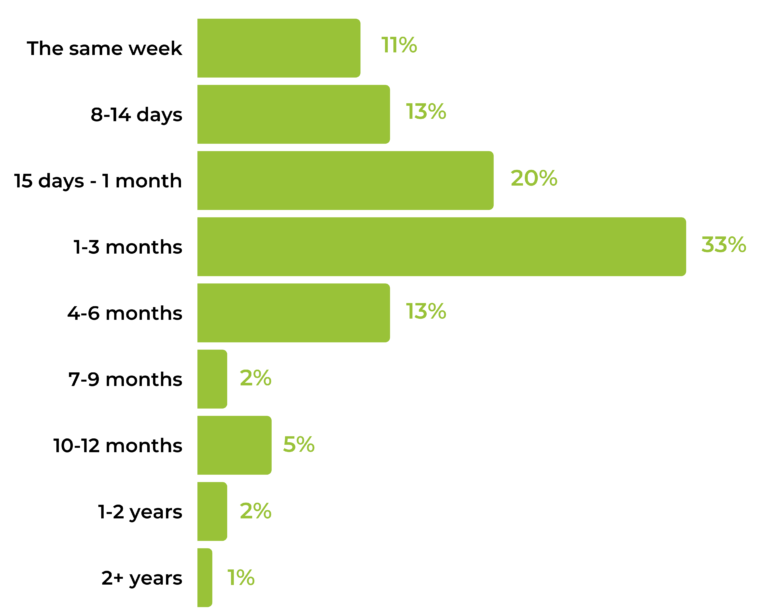
However, most consumers prefer review content that is even fresher than that. Over three-quarters (77%) of consumers prefer to see reviews that are three months old or younger. Nearly half (44%) want to see reviews published within the last month, and 11% of consumers seek out reviews written that same week.
Why Are Recent Reviews Important to Consumers?
Shoppers value recent reviews for a number of important reasons.
The main reason consumers value recent reviews is that they provide a more accurate indicator of the product’s quality. Additionally, more recent reviews increase the customer’s confidence about their purchase, and make the reviews feel more relevant and trustworthy.
Given the importance of review recency to consumers, it’s critical that brands make it easy for them to find fresh reviews for the products they’re considering.
4 Tips for Generating Fresh Reviews
If the data tells us anything, it’s that recent reviews matter — a lot. For brands to maximize their review content, it’s important that they not only have a lot of reviews, but that they have a lot of recent reviews. Here are three ways brands and retailers can consistently generate fresh reviews.
1. Put review collection on auto-pilot with a post-purchase email campaign
Our research shows that 60% to 90% of all reviews originate from an email request. Set up a post-purchase email campaign that emails customers after their purchase requesting a review.
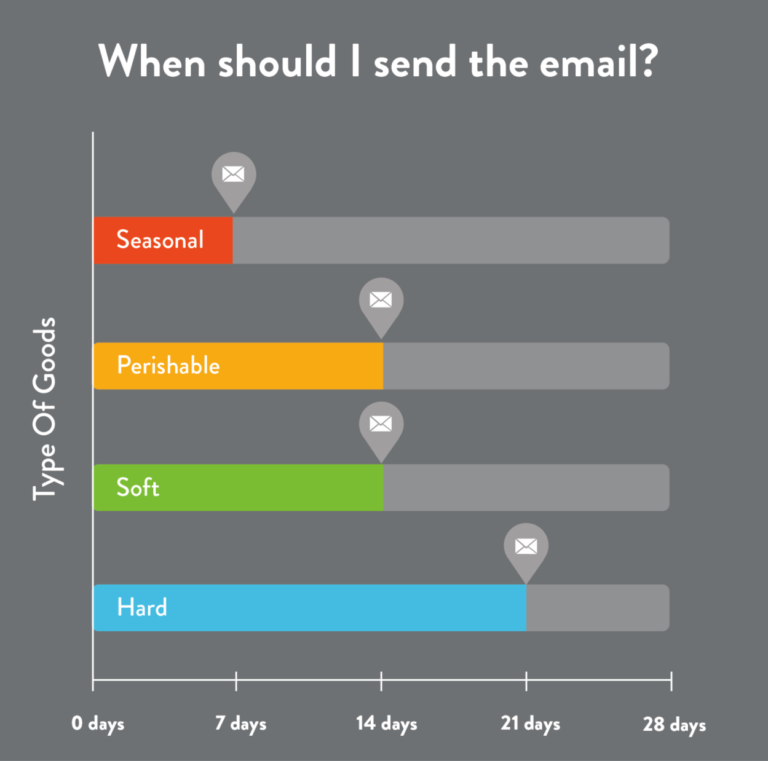
2. Launch new products with reviews with a product sampling campaign
86% of consumers consider review recency to be even more important when they’re considering a brand or product they haven’t purchased before. So, make sure to launch new products with a good number of reviews.
How can you collect reviews before the product has even launched? With a product sampling campaign. Prior to launch, distribute physical samples to customers along with a request that they share their feedback via a review.
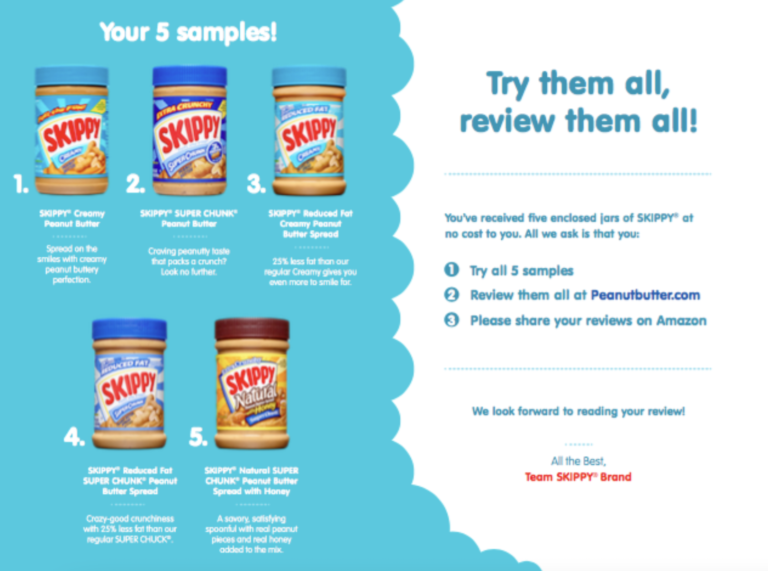
Customers love pre-launch product sampling campaigns because it makes them feel like a VIP. Plus, they get something for free. All that goodness puts them in the mood to write a review — enabling new products to launch with recent reviews.
3. Offer loyalty points for reviews
Do you have a customer loyalty program? Make reviews a point-earning activity. Allow customers to earn points each time they review one of your products.

4. Leverage retail purchase history data
Yes, you read that right. Leverage purchase history data from retailers and marketplaces that sell your product to generate verified reviews from people who have actually bought your product. Expanding your review solicitation methods outside of your own DTC channel has always been a bit of a holy grail. And now you can.
Your Goal for 2022: Focus on Review Recency
If your brand needs a New Year’s resolution, make it this: invest in review recency. Review collection isn’t a one-and-done process. Our data consistently shows that customers highly value recent reviews. Having more recent reviews can increase consumer confidence, build their trust, and encourage them to click the “buy” button. Having too few recent reviews, on the other hand, can encourage them to check out your competitor instead.
Avoid losing customers to the competition. Set yourself up for success by always collecting fresh content. Start now with post-purchase email campaigns for your existing products, sampling campaigns for new products, and incorporating reviews into your loyalty program.


